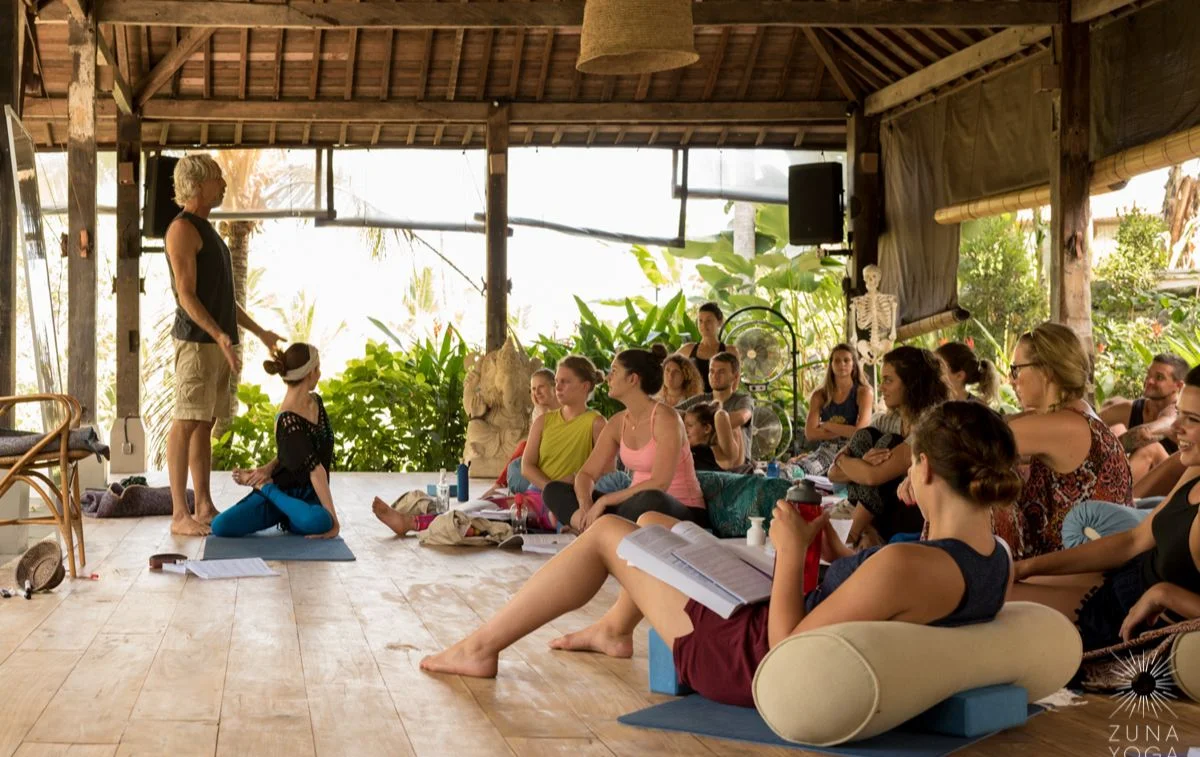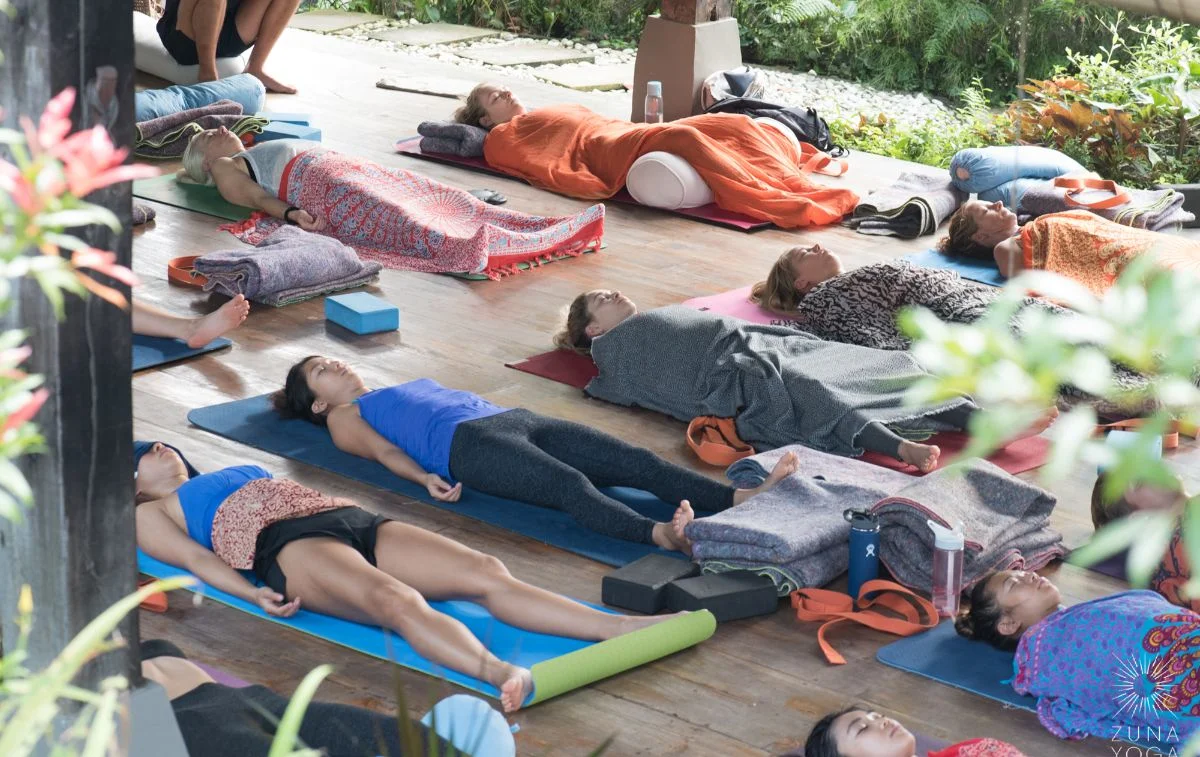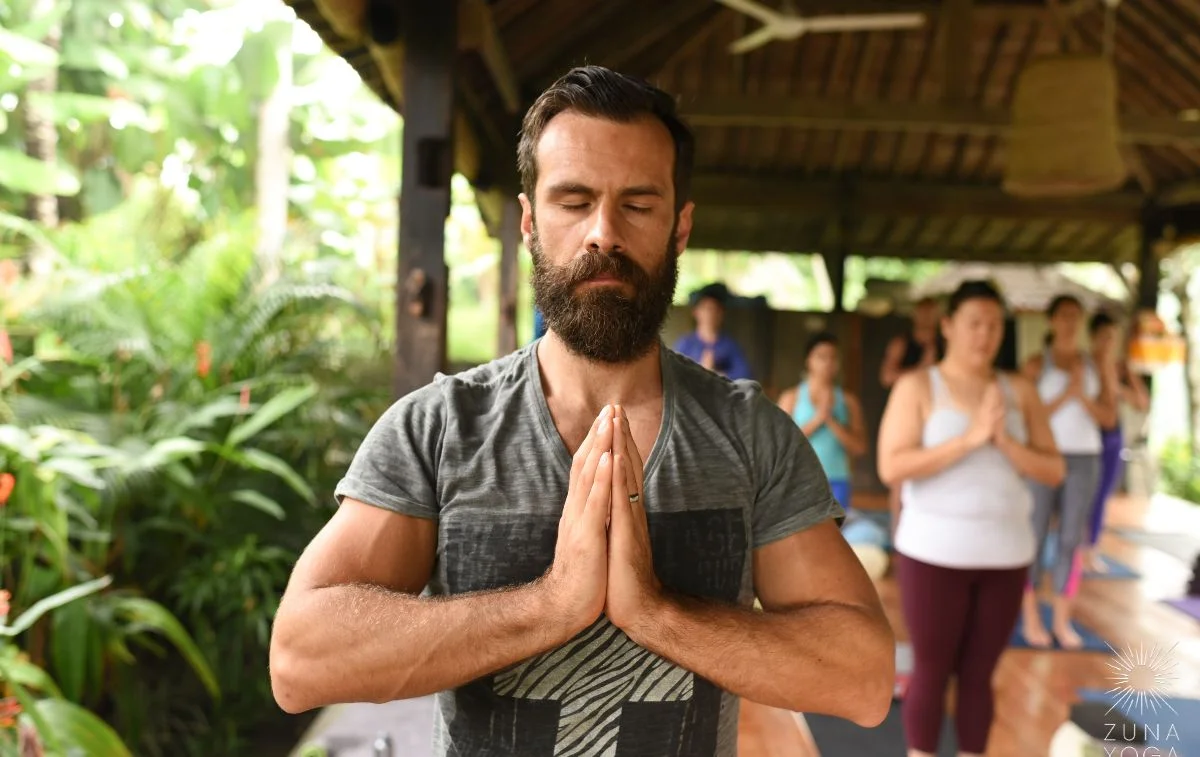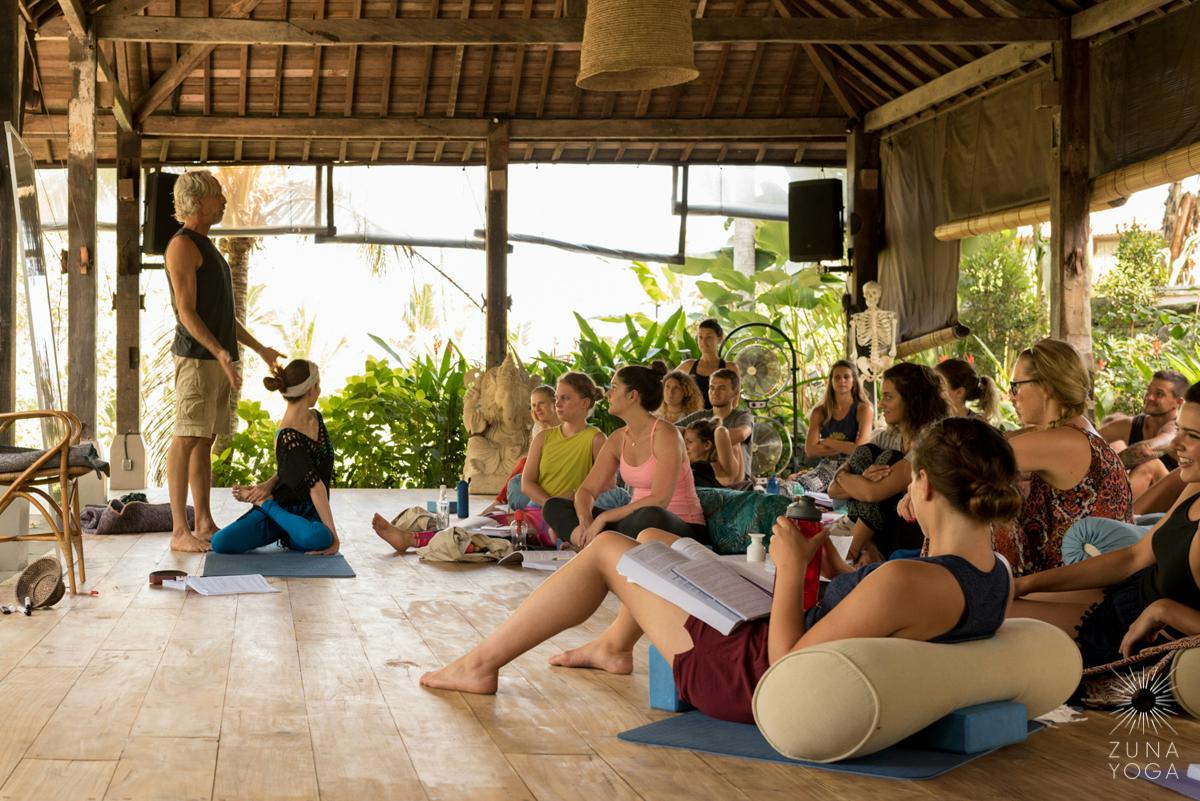By: Katherine Girling, ERYT500 Zuna Yoga
Happy New Year! It is time to integrate the Yamas of Yoga into your daily lives.
"The idea of a yoga practice is really not just to focus and be aware and mindful and calm for the time that we’re on the mat, but to carry this state of being with us when we leave class, so it can have a much deeper impact than just making us look good." - Emma Newlyn

The beginning of a New Year is a great time to reflect on what you've learned and accomplished in the previous 12 months, as well as how you want to move forward. Integrate the Yamas, forget New Year's resolutions.
Research conducted at the University of Scranton showed that 23% of people quit their New Year's resolution in just one week (Morin, n.d). If one decides they would like to change their old habits, they must acknowledge the habits you'd like to give up.
As you take the next steps on your path of personal development, whether that means a post-holiday cleanse, a new diet, or a commitment to a regular practice, remember the bigger picture. Learning how to shape your attitudes, thoughts, and actions is key to steering yourself skillfully toward your goals. If one is prepared for the reality of change, it will be that much easier to make it last within your life. No one is perfect, and we must be understanding of this. Over countless times in the Yoga Sutras, Patanjali stresses the importance of letting the ignorance and ego go in order to make way for change.
Integrate The Yamas
In the Yoga Sutras, Patanjali outlines the eight limbs of yoga as a path to good living and happiness. Particularly relevant as you move into the New Year are the first and second limbs: the Yamas, focusing on personal morals and restraint, and the Niyamas -- personal observances. The Yamas/Niyamas are yoga's ten ethical guidelines and are foundational to all classical yogic thought. The Niyamas and Yamas in daily life are intended as a road map, indicating where you are on your journey and how to spot the next milestone. Integrate the Yamas to provide a framework to take ownership of your life and direct it towards true fulfillment.
Yamas and Niyamas in Everyday Life

So, what are the 10 Yamas and Niyamas?
The Yamas include:
- Ahimsa ~ Non-violence
- Satya ~ Truthfulness
- Asteya ~ Non-stealing
- Brahmacharya ~ Non-sensuality
- Aparigraha ~ Non-possessiveness
The Niyamas include:
- Saucha ~ Purity
- Santosha ~ Contentment
- Tapas ~ Self-discipline
- Svadhyaya ~ Self-study
- Ishvara Pranidhana ~ Surrender
Tips for Practicing the Yamas:
How can we apply Yamas and the Niyamas and why do we practice the Yamas?
Sutra 2.31 Ahimsa satya asteya brahmacharya aparigraha yama
"Non-injury or non-harming (ahimsa), truthfulness (satya), abstention from stealing (asteya), walking in awareness of the highest reality (brahmacharya), and non-possessiveness or non-grasping with the senses (aparigraha) are the five yamas, or codes of self-regulation or restraint, and are the first of the eight steps of Yoga."
Yamas, the restraints, consist of five principles: non-violence, non-lying, non-stealing, non-sensuality and non-possessiveness. They center on how you relate to to the external world, and in particular, other people. Practicing them helps you become healthy, civilized members of your family and community. They cut down on distractions and reduce the problems you create for yourself by eliminating violence, duplicity, animosity and greed from your life. Consequently, you are not a threat to others, nor are others a threat to you. There is no reason to be fearful, and peace begins to grow.
Sutra 2.32 Shaucha santosha tapah svadhyaya ishvarapranidhana niyamah
"Cleanliness and purity of body and mind (shaucha), an attitude of contentment (santosha), ascesis or training of the senses (tapas), self-study and reflection on sacred words (svadhyaya), and an attitude of letting go into one’s source (ishvarapranidhana) are the observances or practices of self-training (niyamas), and are the second rung on the ladder of Yoga."
Niyamas, the observances, also consist of five principles: purity, contentment, self discipline, self study and surrender to God. These five principles open new channels for physical, mental and spiritual nourishment. By purifying your thoughts, speech and action, you prepare yourself to greet the Divine who resides within you. Contentment gives you the freedom from anxiety, which can be an enormous drain on your energy.
Self-discipline frees you from laziness, giving you the opportunity to unfold our dormant potential. Self-study allows you to identify your strengths and weaknesses. Self-study also includes study of the scriptures and the repetition of the mantras, observances which deepen your understanding of spirituality and improve your focus. These, in turn, motivate you to look for a higher purpose in life.
Self study frees you from attachment to your earlier, immature concepts of spirituality, enabling you to embrace an ever expanding and ever more accurate reality. Surrender to the Divine, the last of the observances, helps you access cosmic forces of energy and aspiration beyond your personal limitations and work with the creative forces of the entire universe. It diminishes ego, and helps you to acknowledge and deepen our connection with the Divine.
Integrate the Yamas in the New Year
In summary, these ten restraints and observances help you become simple, gentle, humble, disciplined, and kind. These characteristics are the prerequisites for self-transformation.
By embracing them, you are preparing a solid foundation for whatever practices you undertake. Since we generally have not mastered these characteristics and therefore can't practice them perfectly, you can instead incorporate the Yamas and the Niyamas into your philosophy of life and practice them to the best of our ability. Most importantly, they come automatically through the practice of asana, pranayama, and meditation.
These ancient writings, believed to have been created as early as 400 BCE, are still very relevant to our modern lives. They are a practical guide to cultivating confidence, compassion, self-care and happiness. As you move into the New Year and choose your own next steps, remember to make yours a healing journey that is filled with wisdom from the Niyamas and Yamas. These writings act as a map to guide us through living.
A few inspirational quotes to bring into the New Year with you:
“We are captured in a culture where our very identity is tied up with our accomplishments. We wear all we have to do like a badge on our shirt for all to see. In this rush to get to the next thing, we have left no time for ourselves to digest and assimilate our lives; this may be our biggest theft of all. We need time to catch up with ourselves. We need time to chew and ponder and allow the experiences of life to integrate within us. We need time to rest and to reflect and to contemplate.”- Deborah Adele.
“I have found three ways of thinking that shift me out of a feeling of powerlessness: practicing gratitude, trust in the moment, and thinking about others.” - Deborah Adele.
Share in the comments below how you will integrate the Yamas in 2023.
With gratitude to Swami Jnaeshvara for his excellent compilation of the Yoga Sutras at www.swamij.com






